Outdoor Furniture Maintenance Made Easy
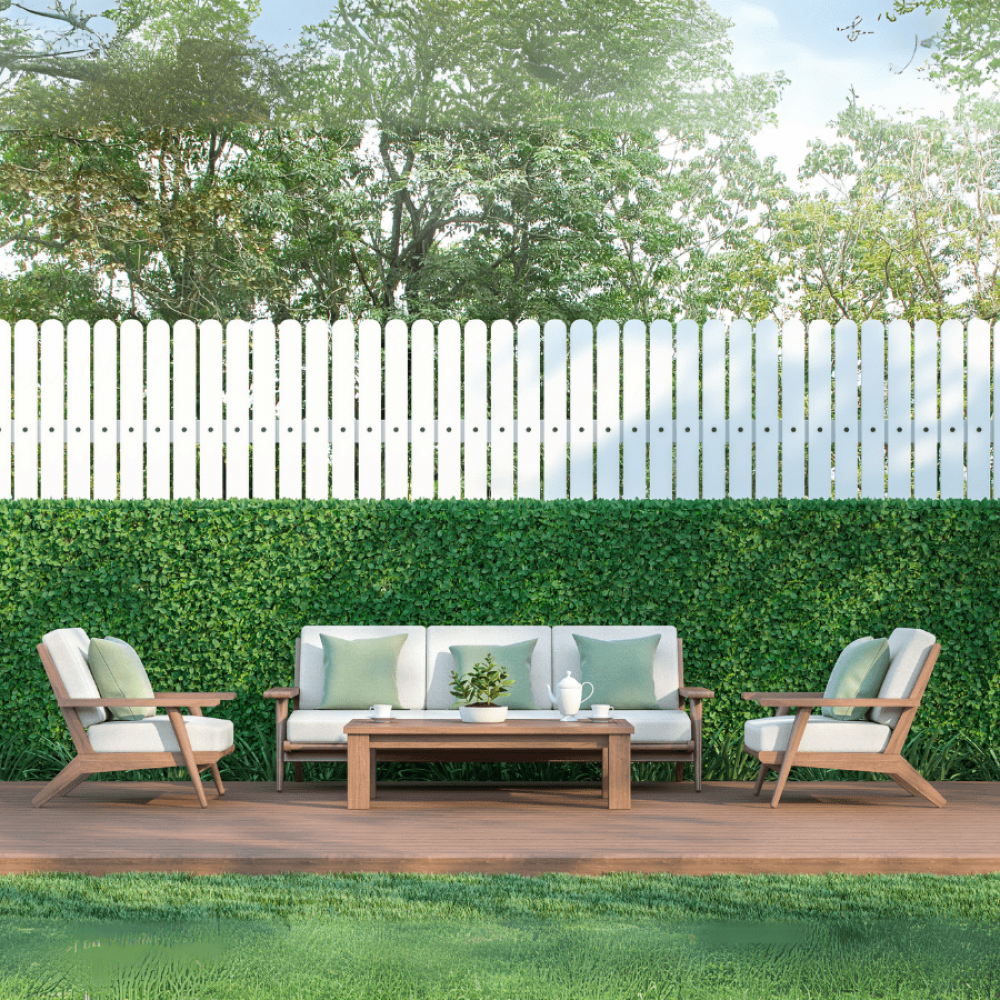
When the warmer months roll around, it’s time to dust off your outdoor furniture and prepare for some relaxation and enjoyment in your backyard or patio. However, after months of exposure to the elements, outdoor furniture can accumulate dirt, grime, and even mildew. To ensure that your outdoor furniture remains in top-notch condition and ready for use, regular cleaning and maintenance are essential.
Taking care of outdoor furniture is not a one-size-fits-all approach. Different types of materials require specific cleaning techniques and products. Whether you have wood furniture, plastic furniture, or fabric elements like cushions, knowing the right way to clean and maintain each piece will help prolong their lifespan and keep them looking their best.
In this blog, we will provide you with all the necessary tips and techniques to easily clean and maintain your outdoor furniture. From essential tools and supplies to step-by-step cleaning guides, you’ll be equipped with the knowledge to keep your outdoor furniture in pristine condition throughout the year.
Essential Tools and Supplies for Outdoor Furniture Maintenance
Before diving into the specifics of cleaning different types of outdoor furniture, it’s important to gather the essential tools and supplies. These items will make your outdoor furniture maintenance tasks easier and more effective.
- A vacuum cleaner with a brush attachment will help remove loose dirt and debris from cushions and upholstery.
- A soft brush or sponge will be useful for scrubbing surfaces and removing stains.
- Clean water is essential for rinsing off cleaning solutions and ensuring a thorough clean.
- For tough stains, you can use additional cleaning solutions such as white vinegar, mild soap, or hydrogen peroxide.
Having these tools and cleaning solutions readily available will make it easier to clean and maintain your outdoor furniture. With the right toolkit, you’ll be able to remove dirt, stains, and grime effectively, leaving your furniture looking fresh and inviting.
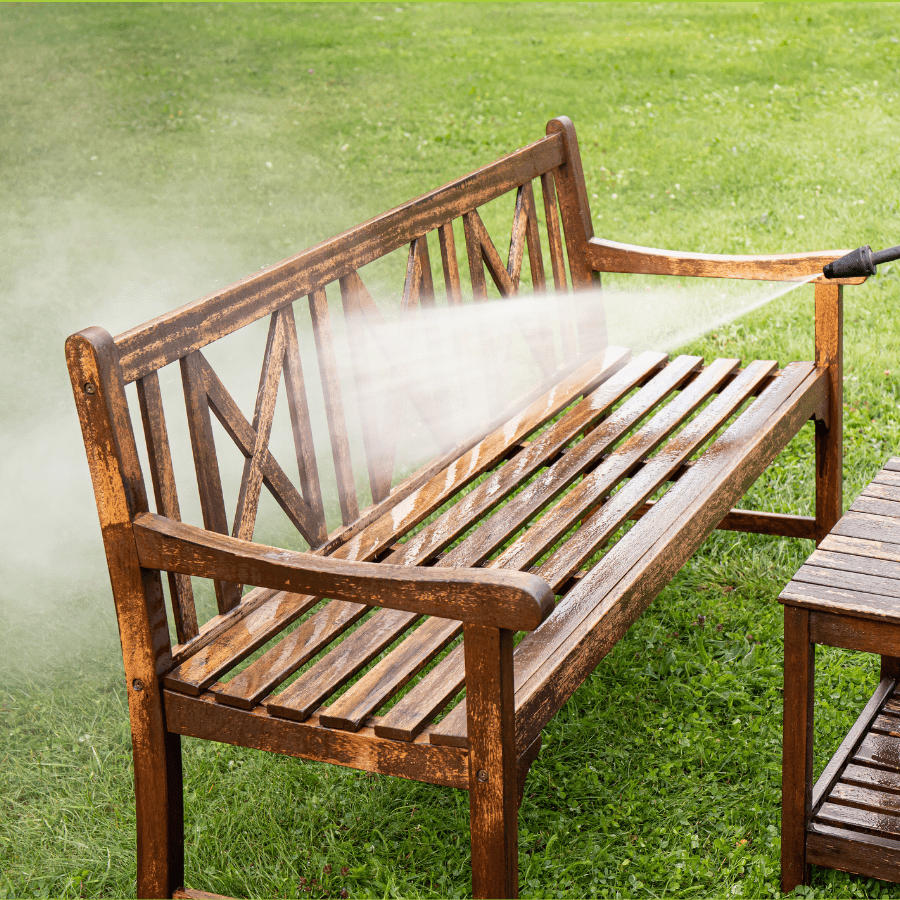
Safe and Effective Cleaning Solutions
When it comes to cleaning outdoor furniture, using safe and effective cleaning solutions is key. While there are many specialty cleaning products available on the market, you can also achieve great results with simple and natural solutions.
One of the most versatile and effective cleaning solutions is white vinegar. It can be used to remove mildew, mold, and stains from various outdoor furniture materials. Simply mix white vinegar with water in a spray bottle and apply it to the affected areas. Let it sit for a few minutes, then scrub with a soft brush or sponge and rinse with clean water.
For tougher stains, you can mix hydrogen peroxide and baking soda to create a paste. Apply the paste to the stains, let it sit for a while, then scrub and rinse. Additionally, mild soap and warm water can be used for general cleaning and maintenance.
By using these safe and effective cleaning solutions, you can keep your outdoor furniture looking clean and fresh without harsh chemicals.
The Right Way to Clean Wood Furniture
Wood furniture is a popular choice for outdoor spaces due to its natural beauty and durability. However, it requires regular cleaning and maintenance to keep it looking its best. The key to cleaning wood furniture is to remove loose dirt and protect it from weather damage.
Regular cleaning of wood furniture should involve gently brushing off any loose dirt or debris using a microfiber cloth or soft brush. This will prevent scratches when cleaning and minimize the risk of stains setting in. Additionally, applying a protective coating, such as a weather-resistant sealant or wood oil, can help protect the wood from weather damage and prolong its lifespan.
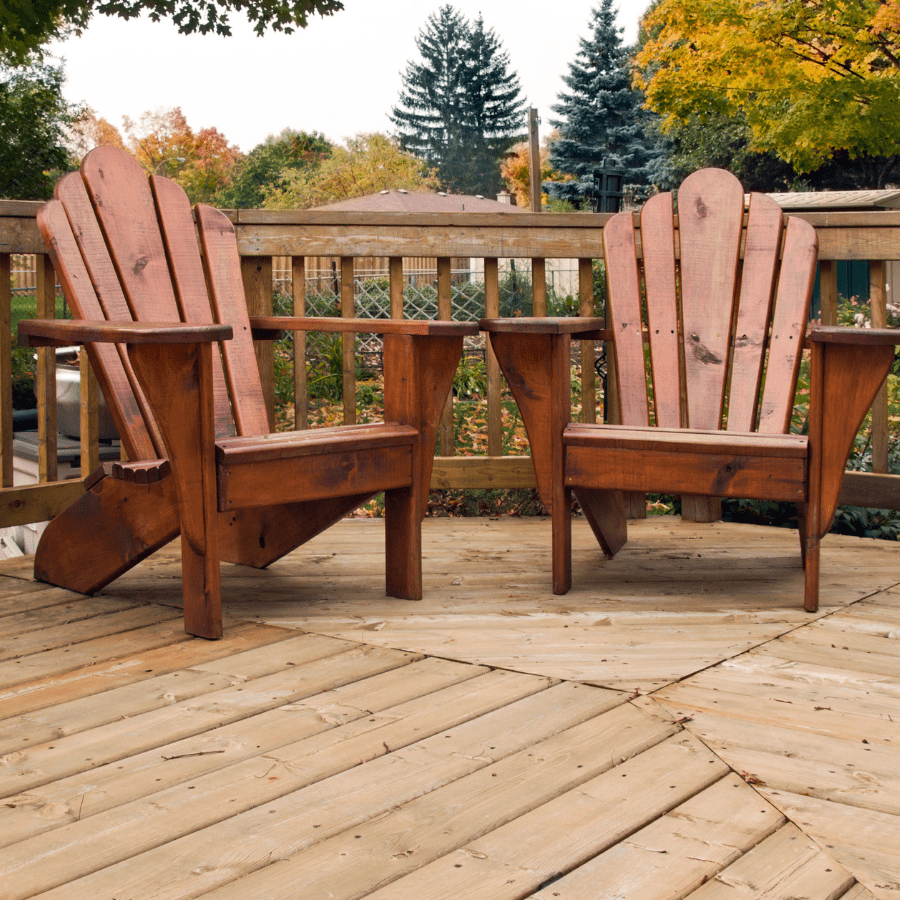
Step-by-Step Guide for Dirt and Stain Removal
To remove dirt and stains from wood furniture, follow these simple steps:
- Start by gently brushing off any loose dirt or debris from the surface using a microfiber cloth or soft brush.
- Mix a mild soap, such as dish soap, with warm water in a bucket.
- Dip a microfiber cloth or sponge into the soapy water and wring out excess water.
- Gently scrub the surface of the wood furniture, focusing on any stained or dirty areas.
- For stubborn stains, you can create a paste using baking soda and water. Apply the paste to the stain and let it sit for a few minutes before scrubbing.
- Rinse the furniture with clean water and pat dry with a clean microfiber cloth.
By following these steps, you’ll be able to remove dirt and stains from your wood furniture, leaving it clean and ready for use.
Protecting Wood Furniture from Weather Damage
Wood furniture is susceptible to weather damage, including fading, cracking, and warping. To protect your wood furniture from these issues, there are a few key steps you can take.
First, apply a protective coating, such as a weather-resistant sealant or wood oil, to the surface of the furniture. This coating will create a barrier between the wood and the elements, preventing moisture from seeping in and causing damage.
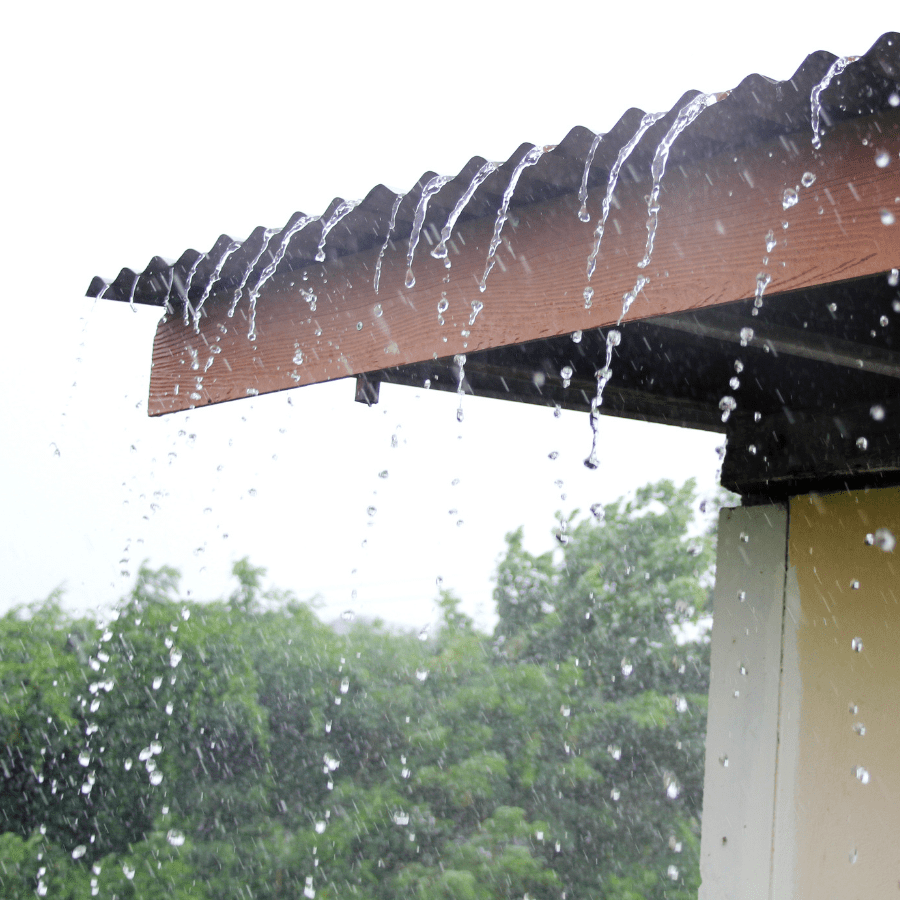
Secondly, consider covering your wood furniture during the winter months or when not in use for extended periods. This will provide an extra layer of protection against harsh weather conditions, preventing damage and prolonging the lifespan of your furniture.
Lastly, regularly inspect your wood furniture for any signs of wear or damage. If you notice any issues, address them promptly to prevent further damage. By taking these preventative measures, you can ensure that your wood furniture remains in excellent condition for years to come.
Maintaining Plastic Furniture for Longevity
Plastic furniture is a popular choice for outdoor spaces due to its durability and low maintenance requirements. However, proper care and maintenance are still necessary to ensure its longevity.
Regular cleaning of plastic furniture involves using a mild soapy water solution and a garden hose to rinse off any dirt or debris. This will prevent discoloration and keep the furniture looking its best. Additionally, avoiding exposure to harsh chemicals and extreme temperatures will help prevent cracks and other forms of damage.
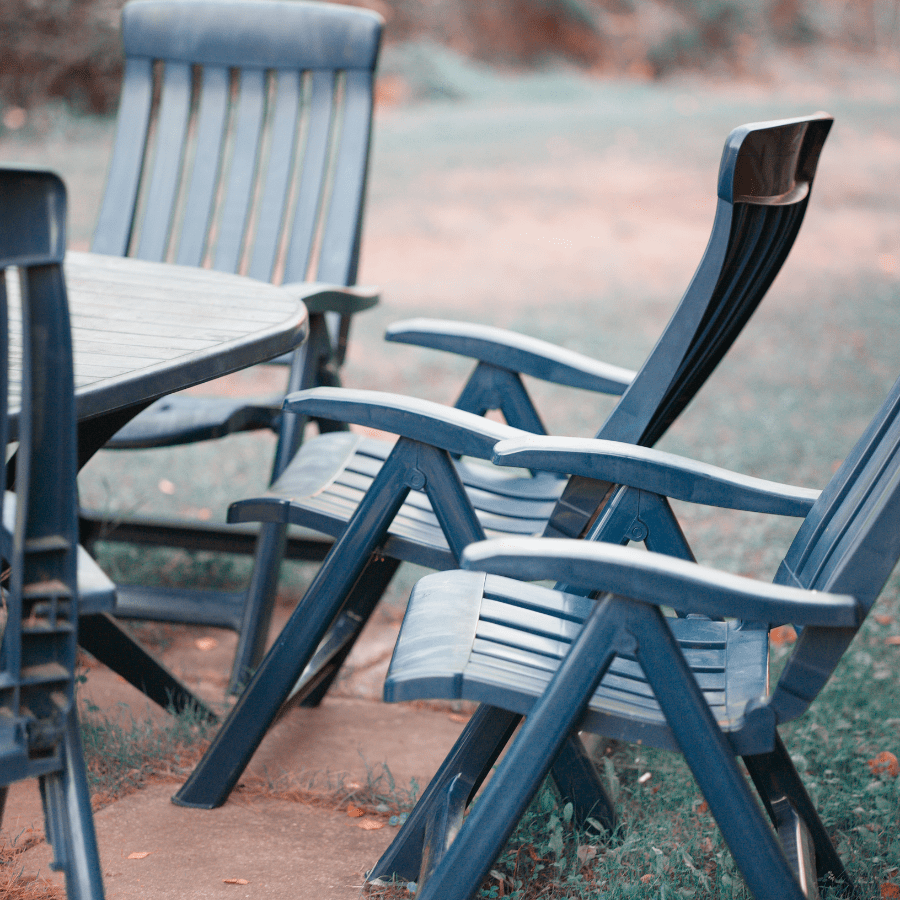
Effective Cleaning Techniques for Plastic Surfaces
Cleaning plastic furniture is relatively easy and can be done using simple techniques and supplies. Here are some effective cleaning techniques for plastic surfaces:
- Mix a solution of soapy water using mild dish soap and warm water.
- Use a sponge or soft brush to scrub the plastic surfaces with the soapy water solution.
- Rinse the furniture thoroughly with a garden hose to remove any soap residue.
- For tougher stains, you can use a sponge or cloth soaked in soapy water to gently scrub the stained areas.
- Rinse again with clean water to ensure all soap and dirt are removed.
By following these cleaning techniques, you can keep your plastic furniture looking clean and vibrant.
Preventing Discoloration and Cracks
Discoloration and cracks can occur over time on plastic furniture, especially if not properly cared for. To prevent these issues, there are a few key steps you can take.
First, avoid exposing your plastic furniture to extreme temperatures, such as direct sunlight or freezing temperatures. These temperature extremes can cause the plastic to become brittle and prone to cracking.
Secondly, avoid using harsh chemicals or abrasive cleaners on your plastic furniture, as they can cause discoloration and damage the surface.
Lastly, consider using protective covers or storing your plastic furniture during the winter months or when not in use for extended periods. This will provide an extra layer of protection against the elements and prolong the lifespan of your furniture.
By following these preventive measures, you can keep your plastic furniture looking its best and avoid common issues like discoloration and cracks.
How to Care for Outdoor Fabric Elements
Outdoor fabric elements, such as cushion covers and umbrella canopies, require regular care and maintenance to prevent stains, mold, and mildew. By following a few simple steps, you can keep your outdoor fabric elements in great condition.
Regularly brush off any loose dirt or debris from the fabric using a soft brush or vacuum cleaner with a brush attachment. This will prevent dirt from setting in and making cleaning more difficult.
In case of spills or stains, act quickly and blot the area with a clean cloth or paper towel to absorb as much liquid as possible. Avoid rubbing the stain, as it can spread and make it harder to remove.
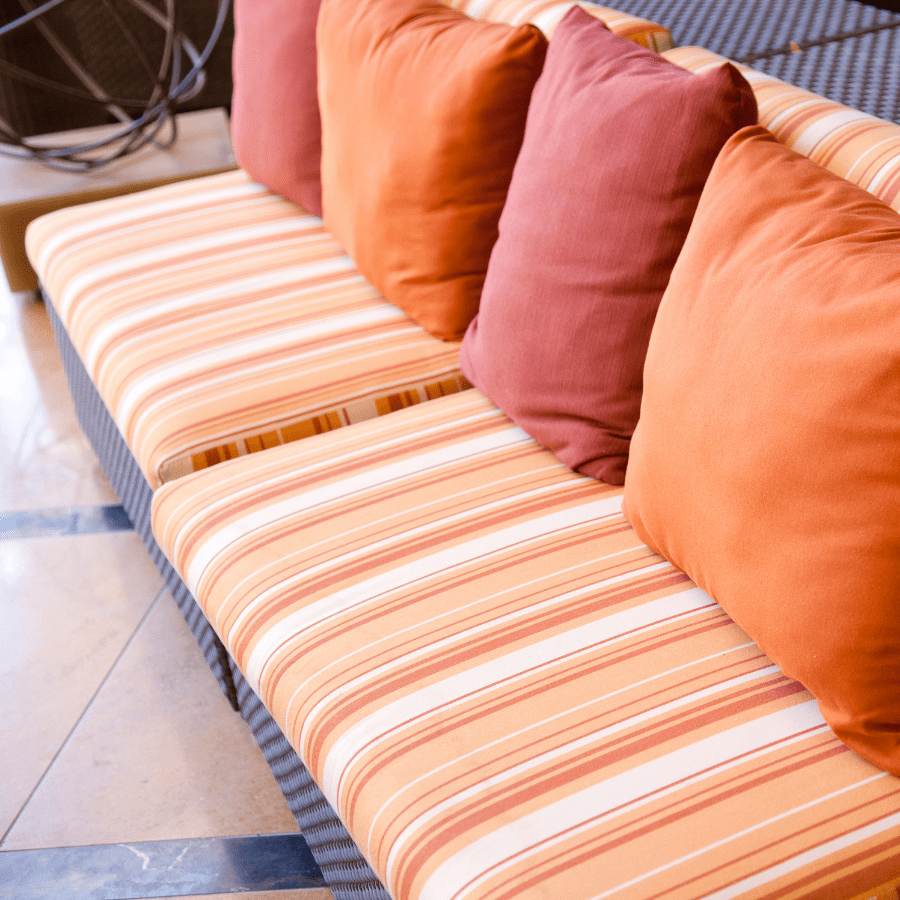
Cleaning and Maintaining Furniture Covers
Cleaning and maintaining furniture covers, such as cushion covers, is essential to keep them looking clean and fresh. Here’s how you can do it:
- Check the care instructions on the fabric to determine the best cleaning method.
- If the covers are machine-washable, remove them from the cushions and place them in the washing machine with a mild soap or detergent.
- Use a gentle cycle and cold water to prevent shrinking or damage to the fabric.
- If the covers are not machine-washable, you can hand wash them in a sink or basin with mild soap and warm water.
- After washing, rinse the covers thoroughly and allow them to air dry completely before putting them back on the cushions.
- Apply a protective product to help make fabrics water repelant and resist fading.
By following these cleaning and maintenance steps, you can keep your furniture covers looking clean and extend their lifespan.
Best Practices for Cushion Care
Cushions are an essential part of outdoor furniture, providing comfort and support. To keep your cushions in the best possible condition, follow these best practices for cushion care:
- Regularly fluff and rotate the cushions to ensure even wear and maintain their shape.
- Vacuum the cushions regularly with a brush attachment to remove loose dirt and debris.
- Spot clean stains as soon as they occur using a mild soap and water solution.
- If the cushion covers are removable, machine wash them according to the care instructions on a gentle cycle with mild detergent.
- Allow the cushions to air dry completely before placing them back on the furniture.
By following these best practices, you can keep your cushions clean, fresh, and comfortable for years to come.
Special Section: Handling Metal and Wrought Iron Furniture
Metal furniture, including wrought iron, adds a touch of elegance to outdoor spaces. However, it requires special care to prevent rust and maintain its appearance.
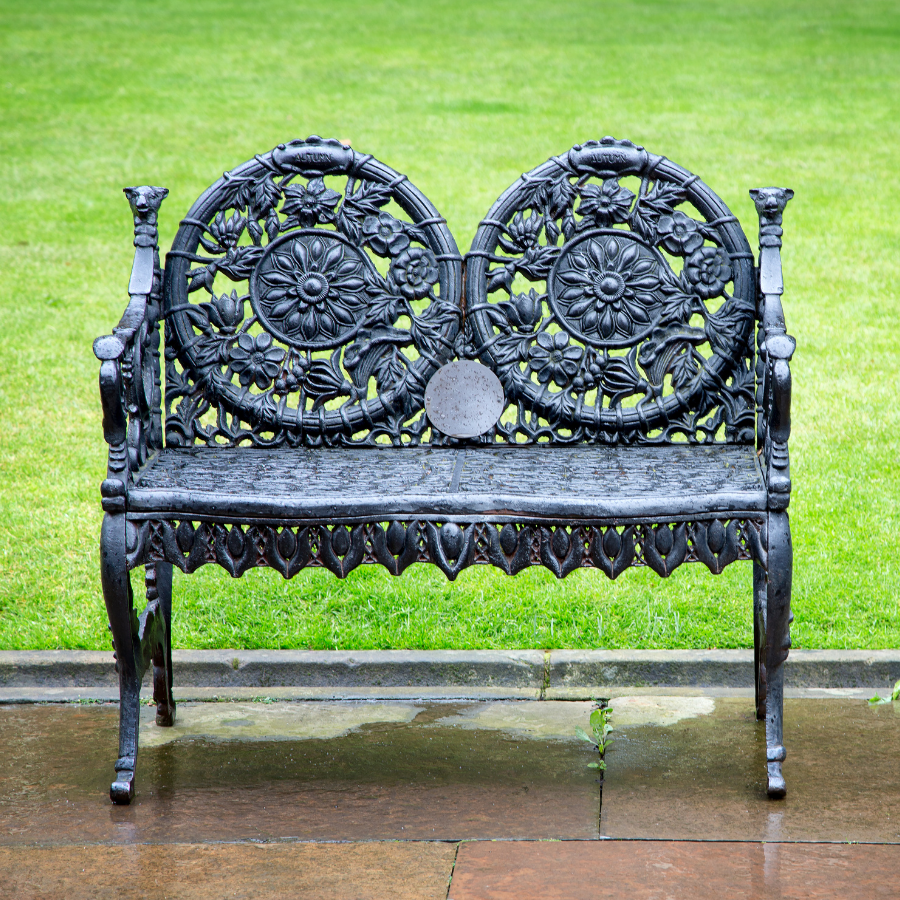
Rust Removal and Prevention Tips
Outdoor furniture is exposed to various weather conditions, which can cause rust to develop over time. To prevent and remove rust, there are several tips you can follow. First, consider using stainless steel furniture, as it is highly resistant to rust. If you already have furniture made of other materials, you can still prevent rust by regularly cleaning and drying it. One effective method is to mix equal parts white vinegar and water and use this solution to clean the furniture. The acidity in the vinegar helps to dissolve rust and prevent further corrosion. Another option is to use a rust remover specifically designed for outdoor furniture. Apply the rust remover according to the manufacturer’s instructions and scrub gently with a soft brush. Finally, make sure to keep your furniture dry and avoid leaving it exposed to moisture for extended periods of time.
- Use stainless steel furniture or regularly clean and dry furniture to prevent rust
- Mix equal parts white vinegar and water to create a rust-removal solution
- Apply a rust remover specifically designed for outdoor furniture and scrub gently
- Keep furniture dry and avoid prolonged exposure to moisture
Innovative Solutions for Outdoor Furniture Maintenance
Innovative solutions for outdoor furniture maintenance have emerged in recent years, offering eco-friendly and effective ways to keep your furniture in top condition. One such solution is the use of eco-friendly cleaning products. These products are made from natural ingredients and are safe for both your furniture and the environment. Additionally, there are protective coatings and sealants available that can help to prolong the life of your furniture by providing an extra layer of protection against UV rays, moisture, and other outdoor elements. These innovative solutions make it easier than ever to maintain your outdoor furniture and ensure it stays looking new for years to come.
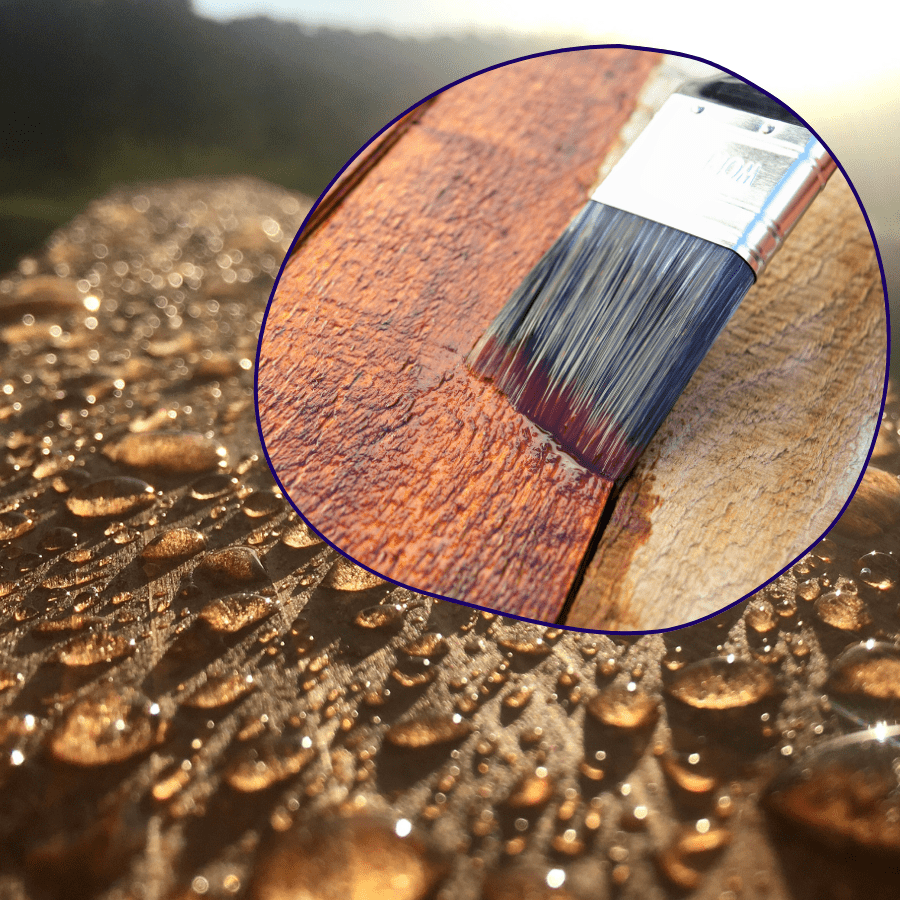
The Role of Protective Coatings and Sealants
In addition to regular cleaning, applying protective coatings and sealants to your outdoor furniture can help to prolong its lifespan and maintain its appearance. Protective coatings act as a barrier against UV rays, moisture, and other outdoor elements, preventing damage and fading. There are various types of protective coatings available, including clear coatings for natural wood furniture and colored coatings for metal or plastic furniture. Sealants, on the other hand, provide an extra layer of protection by filling in any cracks or gaps in the furniture’s surface. This helps to prevent moisture from seeping in and causing damage. By using protective coatings and sealants, you can ensure that your outdoor furniture stays in pristine condition and withstands the test of time.
Seasonal Maintenance Tips to Protect Your Outdoor Furniture
Proper seasonal maintenance is crucial for protecting your outdoor furniture and ensuring its longevity. During the winter months, it is important to prepare your furniture for the colder temperatures and potential snow or ice. This can be done by thoroughly cleaning the furniture and applying a protective coating or sealant. Additionally, using furniture covers can help to shield the furniture from harsh weather conditions. During the summer, it is important to take care of your furniture to avoid sun and heat damage. This includes using cushion covers to protect against fading and keeping the furniture in shaded areas when not in use. By following these seasonal maintenance tips, you can keep your outdoor furniture in optimal condition year-round.
Summer Care to Avoid Sun and Heat Damage
During the summer months, it is important to take extra care of your outdoor furniture to avoid sun and heat damage. Here are some tips to help you protect your furniture:
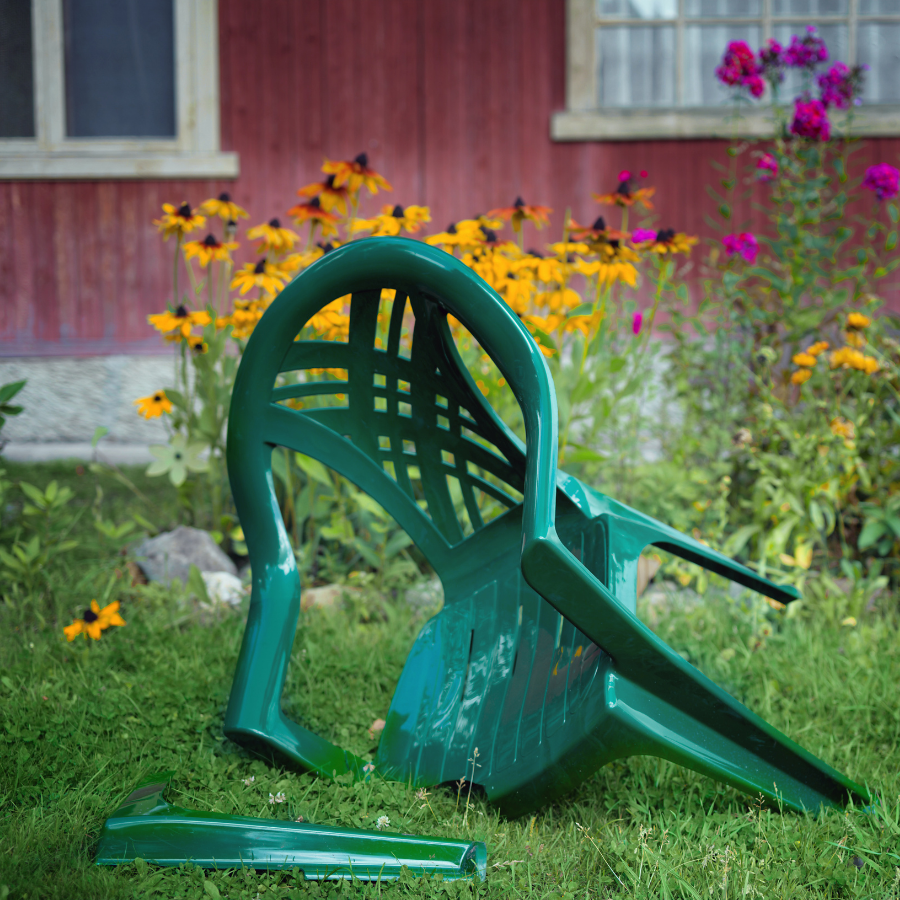
- Place your furniture in shaded areas whenever possible to minimize sun exposure.
- Use cushion covers to protect against fading. Look for covers that offer UV protection.
- Avoid placing hot objects directly on your furniture, as this can cause damage to the surface.
- Clean your furniture regularly to remove dirt and dust that can accumulate and cause damage over time.
- Consider using an umbrella or other shade structure to provide additional protection from the sun.
By following these summer care tips, you can enjoy your outdoor furniture all season long and ensure that it stays looking its best.

Conclusion
Maintaining your outdoor furniture doesn’t have to be a daunting task with the right tools and techniques. By following our comprehensive guide, you can keep your outdoor pieces looking fresh and vibrant for years to come. From cleaning wooden surfaces to protecting fabric elements and handling metal furniture, we’ve covered it all. Don’t forget to implement our seasonal maintenance tips to shield your furniture from the harsh elements. With a little care and attention, your outdoor furniture can withstand the test of time and continue to enhance your outdoor space.
Frequently Asked Questions
What’s the Best Strategy for Preventing Fabric Fade?
To prevent fabric fade, it is important to protect your outdoor fabrics from UV rays and regularly clean them. Use cushion covers that offer UV protection and clean the fabric regularly with a mild detergent and water solution.
Can I Use Vinegar to Clean All Types of Outdoor Furniture?
Vinegar can be used to clean various types of outdoor furniture, including metal, plastic, and wood. However, it is important to check the care instructions for your specific furniture to ensure that vinegar is safe to use.
How Often Should I Perform Deep Cleaning?
Deep cleaning of outdoor furniture should be done at least twice a year, once in the spring before using the furniture regularly and again in the fall before storing it for the winter. This will help to keep the furniture in pristine condition.